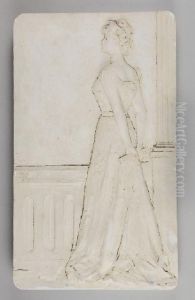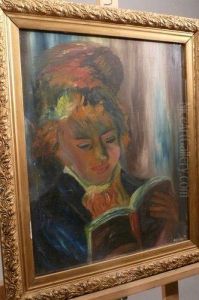Wladislaw Marcinkowski Paintings
Władysław Marcinkowski was a Polish sculptor, born on July 20, 1858, in Poznań, which at the time was under Prussian rule. He was one of the notable sculptors of his time in Poland, and his work is closely associated with the artistic movements of the late 19th and early 20th centuries. Marcinkowski's sculptures often reflected the Romantic and Symbolist trends prevalent in European art of the period.
Marcinkowski initially studied at the School of Decorative Arts in Posen (Poznań) before moving on to further his education at the Prussian Academy of Arts in Berlin. His talent was recognized early on, and he was awarded scholarships that allowed him to travel and study in Rome, which was a center for artistic learning and practice. His experiences in Italy had a profound influence on his works, both in terms of technical skill and thematic choices.
Throughout his career, Marcinkowski created numerous public monuments, busts, and funerary sculptures, which earned him considerable acclaim. His works are characterized by their detailed realism and often emotional expressiveness, qualities that were appreciated in the context of the nationalist movements of the time. His sculptures played a role in the cultural preservation of Polish identity during periods of foreign domination.
Marcinkowski's works can be seen in various public spaces in Poland, including monuments dedicated to Polish national heroes and historical figures. He was also a respected educator, teaching at the School of Fine Arts in Wrocław, where he influenced a new generation of Polish sculptors.
Władysław Marcinkowski passed away on January 11, 1947, in Poznań, leaving behind a legacy of artistic contributions that continue to be celebrated in Poland. His life and works are remembered as part of the cultural heritage of the nation, and his sculptures still stand as a testament to the rich history and artistic traditions of Poland.



